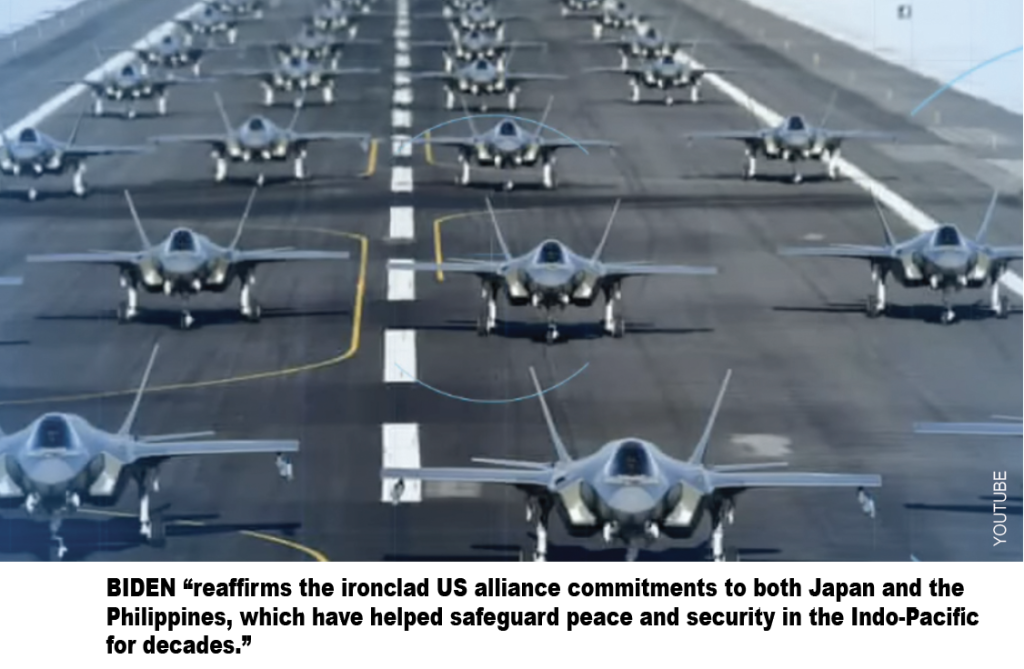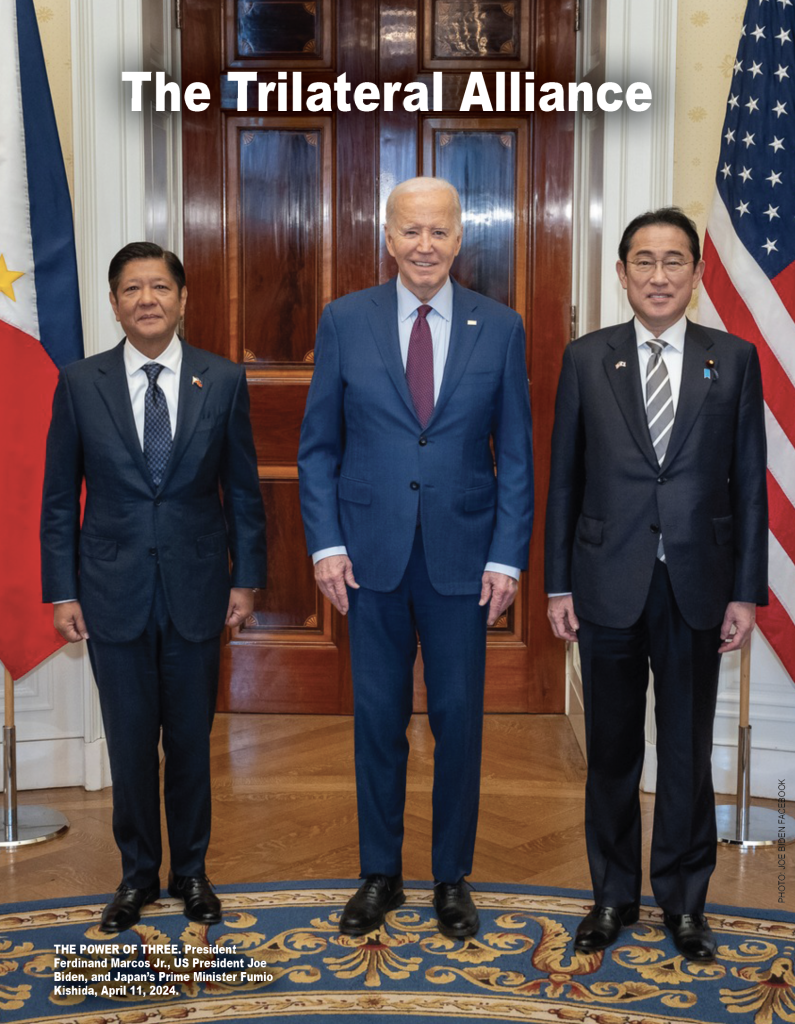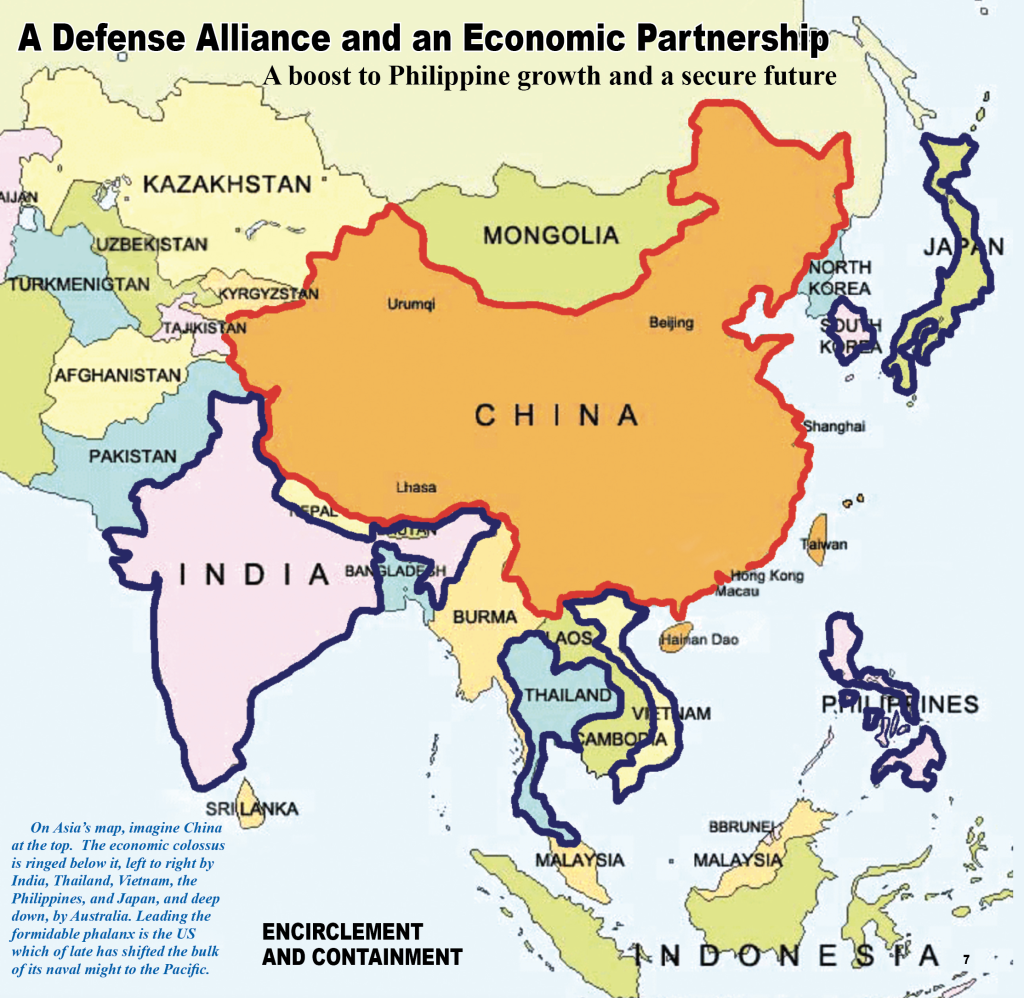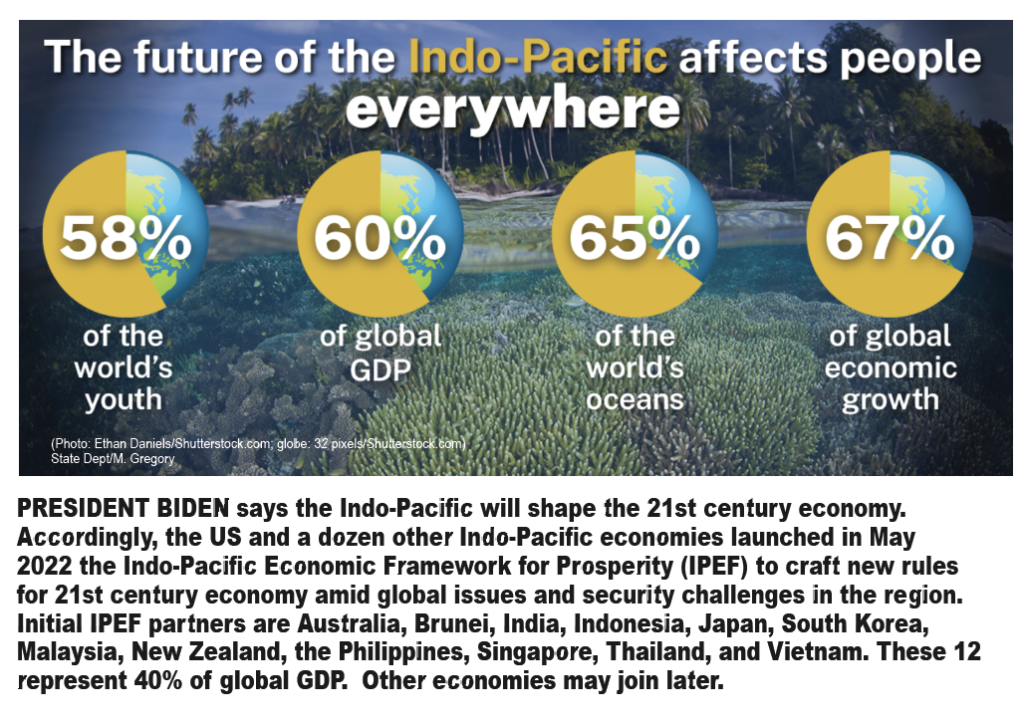Siege and seduction
By ANTONIO S. LOPEZ


“Diplomacy must never be a siege but a seduction,” says Michael Douglas as Benjamin Franklin in the Apple TV+’s “Franklin”.
The leaders of the United States, Japan, the Philippines, and of course, China should probably memorize the famous quote in the movie, unhappily, wrongly attributed to the inventor of electricity.
In the movie, Franklin charmed France to provide the money, guns, clothes, men, and a navy to George Washington to defeat, by 1781, the British, then the world’s greatest military power.
In the current geopolitics among the US, Japan, the Philippines, and China, it is not clear who is doing the siege and who is doing the seduction in diplomacy in the most prized, most strategic, and richest region in the world today, the Asia Pacific.
On April 11, 2024 in Washington DC, US President Joseph Biden, Japanese Prime Minister Fumio Kishida, and Philippine President Ferdinand Romualdez Marcos Jr. held their countries’ first ever trilateral summit and produced a 2,840-word vision statement to promote peace, economic growth, and global prosperity.
“As three Indo-Pacific maritime democracies, our nations and the half-billion people we collectively represent are bound together by historical ties of friendship, robust and growing economic relations, and a proud and resolute commitment to our shared fundamental values of freedom, democracy, respect for human rights, and the rule of law,” asserted the three.
By the way, the US, Japan, and the Philippines used to be enemies.

The US colonized the Philippines for 48 years, from May 1898 to July 1946. In Balangiga, Samar in 1901, the US military was accused of killing 2,000 civilians, burning 200 homes and turning Samar into a “howling wilderness” in retaliation for the killing by Filipino guerillas of 54 men of the US 9th Infantry.
Japan colonized the Philippines for four years,1942 to 1945. Japan bombed Pearl Harbor, Dec. 7, 1941. In retaliation, the US nuked Japan twice, Hiroshima on Aug. 6, 1945, and Nagasaki on Aug. 9, 1945, killing up to 200,000 people in the only use so far of nuclear weapons in an armed conflict.
Japan and China waged an eight-year war, 1937 to 1945. Many Chinese still remember the Nanjing Massacre of December 1937-January 1938 where between 100,000 and 300,000 Chinese were killed.
Today, some analysts see the trilateral alliance as the beginning of a NATO-like security umbrella aimed at China.
The three Indo-Pacific leaders devoted 770 words, a third of their statement’s length, on the recent actions of one country, China, and how these impact on peace and security in Asia, particularly in the South China Sea, East China Sea, and the Taiwan Strait.
The trio’s response to the Chinese depredations—a trilateral defense cooperation, including combat training and exercises, security assistance, and transfer of firearms and defense equipment and technology. Australia and South Korea are also encouraged to pitch in.
China, of course, is threatened by creeping containment and encirclement masterminded by the US which is seeking to tilt the power balance in the Asia Pacific in its favor, a policy began by the Barrack Obama Administration’s pivot to Asia.
The Trump Administration rejuvenated the Quadrilateral Security Dialogue (QUAD) — a security alliance between the US, Japan, India, and Australia, often referred to as the “Asian NATO”. Trump also forged stronger diplomatic relations with Taiwan and reinforced military ties with Australia, Japan, and South Korea.

On Asia’s map, imagine China at the top. The economic colossus is ringed below it, left to right by India, Thailand, Vietnam, the Philippines, and Japan, and deep down, by Australia. Leading the formidable phalanx is the US which of late has shifted the bulk of its naval might to the Pacific.
To be sure, the Trilateral Group (US, Japan and the Philippines) and the Quad (US, Japan, India, and Australia), are unnerved by what the three April 11 summiteers call “dangerous and aggressive behavior in the South China Sea. We are also concerned by the militarization of reclaimed features and unlawful maritime claims in the South China Sea.”
“We steadfastly oppose the dangerous and coercive use of Coast Guard and maritime militia vessels in the South China Sea, as well as efforts to disrupt other countries’ offshore resource exploitation,” Biden, Kishida, and Marcos declared.
In their joint visioning, Biden “reaffirms the ironclad US alliance commitments to both Japan and the Philippines, which have helped safeguard peace and security in the Indo-Pacific for decades.”
China is seen disrupting three areas: in the South China Sea or the West Philippine Sea, the East China Sea, and Taiwan Strait.
Biden, Kishida, and Marcos expressed serious concern over:
One, “the PRC’s repeated obstruction of Philippine vessels’ exercise of high seas freedom of navigation and the disruption of supply lines to Second Thomas Shoal, which constitute dangerous and destabilizing conduct.”
The final and legally binding July 12, 2016 Arbitral Tribunal determined that this feature lies within the Philippines’ exclusive economic zone, and we call on the PRC to abide by the ruling.
Two, “regarding the situation in the East China Sea, and reiterate our strong opposition to any attempts by the PRC to unilaterally change the status quo by force or coercion in the East China Sea, including through actions that seek to undermine Japan’s longstanding and peaceful administration of the Senkaku Islands.”
Three, “the importance of peace and stability across the Taiwan Strait as an indispensable element of global security and prosperity, recognize that there is no change in our basic positions on Taiwan, and call for a peaceful resolution of cross-Strait issues.”
President Marcos has offered the use of nine Philippine military bases by the Americans who return after they were sent away by our Senate in 1992.
In appreciation, the US, with Japan’s help, will develop the base areas along the 273-km Luzon Economic Corridor, from Subic to Batangas.
